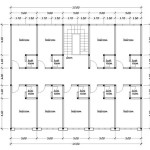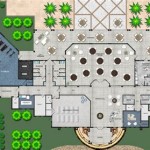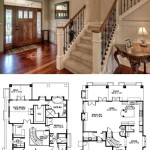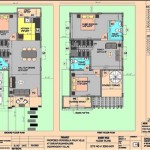3D Plans for Houses: A Comprehensive Guide
Building a house is a significant investment, both financially and emotionally. One of the most crucial steps in this process is visualizing the finished product. 3D house plans offer a powerful solution, providing a realistic and detailed representation of the future home. This article explores the various aspects of 3D house plans, from their benefits to their creation and application.
Benefits of 3D House Plans
Traditional 2D blueprints, while essential, can be challenging to interpret for those unfamiliar with architectural drawings. 3D house plans bridge this gap by offering a visually accessible representation of the house. This allows homeowners to fully grasp the spatial relationships and design elements, ultimately leading to better-informed decisions and fewer costly revisions during construction.
Furthermore, these plans offer the following advantages:
- Improved Communication: 3D visuals facilitate clear communication between architects, builders, and homeowners, ensuring everyone is on the same page.
- Early Problem Detection: Potential design flaws or spatial issues can be identified and addressed early in the planning stage, saving time and resources.
- Enhanced Customization: Homeowners can easily experiment with different design options, materials, and layouts, achieving a truly personalized home.
Types of 3D House Plans
3D house plans come in various formats, each offering different levels of detail and interactivity. Understanding these distinctions is crucial for selecting the most appropriate plan for specific needs.
Exterior Views
These renderings showcase the exterior of the house from various angles, providing a realistic depiction of its appearance in its surroundings. This allows for careful consideration of elements like rooflines, window placement, and landscaping.
Interior Views
3D interior views offer a walkthrough experience, allowing users to virtually navigate the house and explore its layout, room dimensions, and spatial relationships. This feature is invaluable for optimizing furniture placement and envisioning the flow of the home.
Interactive 3D Models
Taking the concept further, interactive 3D models offer a dynamic experience. Users can explore the house from any angle, change materials and finishes in real-time, and even simulate different lighting conditions. This level of interactivity empowers homeowners to make well-informed design choices.
Creating 3D House Plans
Developing 3D house plans typically involves specialized software and expertise. Architectural design software packages like Autodesk Revit, ArchiCAD, and SketchUp are commonly used to create these models. The process generally involves the following steps:
Developing the 2D Blueprint
The foundation of any 3D model is a detailed 2D blueprint. This blueprint outlines the floor plan, elevations, and sections of the house, providing the structural framework for the 3D model.
Creating the 3D Model
Using the 2D blueprint as a guide, the architect or designer constructs the 3D model within the chosen software. This involves extruding walls, adding windows and doors, and incorporating other architectural elements.
Applying Materials and Textures
Once the 3D model is complete, materials and textures are applied to surfaces. This adds realism and visual appeal, allowing homeowners to visualize the finished product accurately.
Applications of 3D House Plans
Beyond visualizing the finished home, 3D house plans find application in various aspects of the construction process, including:
Cost Estimation
Accurate 3D models provide detailed information on material quantities and dimensions, allowing for more precise cost estimations and budgeting.
Construction Planning
Builders can use 3D models to plan construction sequences, optimize material delivery, and identify potential logistical challenges.
Marketing and Sales
3D renderings and virtual tours are powerful marketing tools, attracting potential buyers and facilitating the sales process. These visuals offer an immersive experience that traditional marketing materials cannot replicate.
Virtual Reality (VR) and Augmented Reality (AR) Integration
The integration of VR and AR technologies with 3D house plans further enhances the visualization experience. VR allows users to “walk through” the house in a fully immersive environment, while AR overlays the 3D model onto the real-world site, providing a powerful on-site visualization tool.
Choosing the Right 3D House Plan Provider
When selecting a provider for 3D house plans, consider the following factors:
- Experience and Expertise: Look for providers with a proven track record in creating high-quality 3D models and a deep understanding of architectural design.
- Software Proficiency: Ensure the provider is proficient in industry-standard software and can deliver the desired level of detail and interactivity.
- Communication and Collaboration: Open communication and a collaborative approach are essential for a successful project. Choose a provider who is responsive and willing to work closely with you.
3D house plans have revolutionized the way homes are designed, built, and experienced. By providing a clear, interactive, and realistic representation of the future home, they empower homeowners to make informed decisions, ensuring the final product aligns perfectly with their vision.

How Much Do 3d House Plans Cost Faqs Answered Cedreo

How Do You Make A 3d Floor Plan

What Is 3d Floor Plan How To Make It Benefits Cost

20 Splendid House Plans In 3d Pinoy

1000 3d Floor Plans And Home Design Ideas To Build Free Plan House Imagination Shaper

180 Best 3d House Plans Floor Ideas

Sweet Home 3d Draw Floor Plans And Arrange Furniture Freely

How Much Do 3d House Plans Cost Faqs Answered Cedreo

3d Floor Plans Renderings Visualizations Fast Delivery

3d Floor Plans








